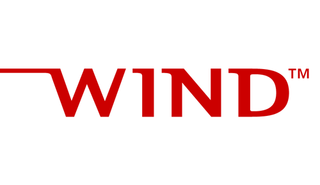In system administration, orchestration is the automated configuration, coordination, and management of computer systems and software.

NetApp, Inc. is an American hybrid cloud data services and data management company headquartered in Sunnyvale, California. It has ranked in the Fortune 500 since 2012. Founded in 1992 with an IPO in 1995, NetApp offers hybrid cloud data services for management of applications and data across cloud and on-premises environments.

Wind River Systems, also known as Wind River, is an Alameda, California-based wholly owned subsidiary of TPG Capital. The company develops embedded system software consisting of run-time software, industry-specific software, simulation technology, development tools and middleware.
DX 200 is a digital switching platform currently developed by Nokia Networks.

The Linux Foundation (LF) is a non-profit technology consortium founded in 2000 as a merger between Open Source Development Labs and the Free Standards Group to standardize Linux, support its growth, and promote its commercial adoption. It also hosts and promotes the collaborative development of open source software projects.
Infrastructure as a service (IaaS) are online services that provide high-level APIs used to dereference various low-level details of underlying network infrastructure like physical computing resources, location, data partitioning, scaling, security, backup etc. A hypervisor, such as Xen, Oracle VirtualBox, Oracle VM, KVM, VMware ESX/ESXi, or Hyper-V, LXD, runs the virtual machines as guests. Pools of hypervisors within the cloud operational system can support large numbers of virtual machines and the ability to scale services up and down according to customers' varying requirements.

OpenStack is a free open standard cloud computing platform, mostly deployed as infrastructure-as-a-service (IaaS) in both public and private clouds where virtual servers and other resources are made available to users. The software platform consists of interrelated components that control diverse, multi-vendor hardware pools of processing, storage, and networking resources throughout a data center. Users either manage it through a web-based dashboard, through command-line tools, or through RESTful web services.

OpenNebula is a cloud computing platform for managing heterogeneous distributed data center infrastructures. The OpenNebula platform manages a data center's virtual infrastructure to build private, public and hybrid implementations of Infrastructure as a Service. The two primary uses of the OpenNebula platform are data center virtualization and cloud deployments based on the KVM hypervisor, LXD system containers, and AWS Firecracker microVMs. The platform is also capable of offering the cloud infrastructure necessary to operate a cloud on top of existing VMware infrastructure. In early June 2020, OpenNebula announced the release of a new Enterprise Edition for corporate users, along with a Community Edition. OpenNebula CE is free and open-source software, released under the Apache License version 2. OpenNebula CE comes with free access to maintenance releases but with upgrades to new minor/major versions only available for users with non-commercial deployments or with significant contributions to the OpenNebula Community. OpenNebula EE is distributed under a closed-source license and requires a commercial Subscription.
HP Cloud Service Automation is cloud management software from Hewlett Packard Enterprise (HPE) that is used by companies and government agencies to automate the management of cloud-based IT-as-a-service, from order, to provision, and retirement. HP Cloud Service Automation orchestrates the provisioning and deployment of complex IT services such as of databases, middleware, and packaged applications. The software speeds deployment of application-based services across hybrid cloud delivery platforms and traditional IT environments.
6WIND is a French company marketing high performance-networking software. The company is privately held and headquartered in the West Paris area, in Montigny-le-Bretonneux. 6WIND has a US subsidiary, sales and support offices in Japan and South Korea, and research and development in China. The company provides packet processing software for physical and virtual Linux networks applications. Its offerings included source code, also marketed as network function virtualization (NFV).
HP CloudSystem is a cloud infrastructure from Hewlett Packard Enterprise (HPE) that combines storage, servers, networking and software.
openQRM is a free and open-source cloud computing management platform for managing heterogeneous data centre infrastructures.
Network functions virtualization is a network architecture concept that uses the technologies of IT virtualization to virtualize entire classes of network node functions into building blocks that may connect, or chain together, to create communication services.

Big Switch Networks was a cloud and data center networking company. The company was founded by Kyle Forster and Guido Appenzeller in 2010 and has roots in the original Stanford research team that invented software defined networking (SDN). The company was acquired by Arista Networks in February of 2020.
Cloud management is the management of cloud computing products and services.

Mirantis Inc. is a Campbell, California, based B2B open source cloud computing software and services company. Its container management products are Docker Enterprise Container Cloud and Docker Enterprise, and its core infrastructure product is Mirantis Cloud Platform. It focuses on the development and support of container and cloud infrastructure management platforms based on Kubernetes and OpenStack. The company was founded in 1999 by Alex Freedland and Boris Renski. It was one of the founding members of the OpenStack Foundation, a non-profit corporate entity established in September, 2012 to promote OpenStack software and its community.
Virtuozzo is a privately held software company, specializing in virtualization software. Virtuozzo developed the first commercially available operating system-level virtualization container technology in 2000 which was open-sourced in 2005 in the form of OpenVZ.

CloudBolt is a hybrid cloud management platform developed by CloudBolt Software for deploying and managing virtual machines (VMs), applications, and other IT resources, both in public clouds and in private data centers.
Cloud native computing is an approach in software development that utilizes cloud computing to "build and run scalable applications in modern, dynamic environments such as public, private, and hybrid clouds". Technologies such as containers, microservices, serverless functions and immutable infrastructure, deployed via declarative code are common elements of this architectural style.
A Cloud-Native Network Function (CNF) is a software-implementation of a network function, which runs inside a Kubernetes container and replaces a network function, which would traditionally be performed by a physical device. Cloud-Native Network Functions are a successor to Virtualized Network Functions, one of the components of Network Function Virtualization. The characteristics of Cloud-Native Functions are: